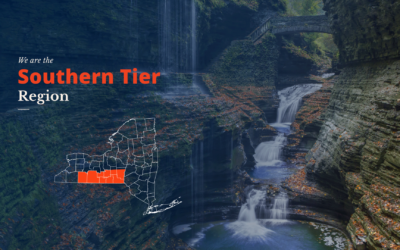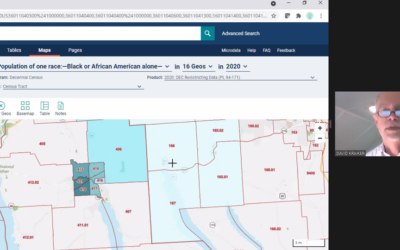Congratulations to the Winners of the 2022 Geospatial Applications Award!
Brian H. Barnes, Debra F. Laufer, Sonam Bagul

From Left to Right: Brian H. Barnes, Town of Amherst, New York; Debra F Laufer, New York University Center for Urban Science & Progress; Sonam Bagul, New York University Center for Urban Science & Progress
Brian H. Barnes |Town of Amherst, New York | UAV Innovation
COVID-19 resulted in significant changes to daily life. In addition to the health consequences, the impacts on travel behavior were also drastically altered. This extreme change was especially noticed across New York State as “stay at home” orders by Governor Andrew Cuomo were first initiated on March 20th, 2020. During the first 3 months of the COVID-19 pandemic, and for historic-archival visual comparison purposes, Brian used an Unmanned Aerial Vehicle (UAV) – Drone (DJI Phantom 4 Pro Obsidian model) to record daily & weekly traffic volume patterns on 5 major thoroughfares in and bordering the Town of Amherst, NY. Brian wanted this unprecedented event to be visually collected in a way that future generations could see the drastic change in daily traffic patterns that took place. He collected major North & South bound streets (Transit Road & Niagara Falls Blvd), along with major East- & Westbound streets (Maple Rd & Sheridan Dr), as well as additional areas (Millersport Hwy), NYS interstate expressways (NYS I-290 & I-990), and Wegmans and Tops Supermarket parking lots. He had already collected these same areas from other regional flights pre-COVID-19. Collections always occurred near the weekday rush hour traffic periods of 4:30-5:00 pm or late morning on the weekends. A dramatic shift in vehicle traffic was observed throughout all phases of the pandemic. Early declines in traffic and therefore vehicle emissions were reported across the state. Street traffic and parking lot volumes continue to evolve years later as private sector businesses try to return their workforce to pre-pandemic onsite staffing levels.
Debra F. Laufer & Sonam Bagul | NYU Center for Urban Science & Progress| COVID-19 Granular Data for Better Decision Making
This project employs GIS as the backbone for harvesting and enabling usable and meaningful disaster-related, spatio-temporal data at a highly granular level. This application introduces a novel strategy related to the enablement of that data with respect to understanding individual and group behavior near COVID-19-laden healthcare facilities. Having access to granular-level information enables better decision-making and provides the data needed to make informed decisions. Integration and spatial data management are carried out within the framework of a geographic information system (GIS). From a modeling point of view, GIS is used mainly for the preprocessing and postprocessing of data to be displayed in digital map layers and visualized in 3D scenes. With GIS, the decision-making process becomes smarter as the data can be viewed directly in geospatial settings for initial processing and the basic spatial analysis enables the users to dig deeper into details to make accurate decisions.
To learn more about the 2022 NYS GIS Association Awardees: https://www.nysgis.net/activities/conferences/nys-gis-association-2022-annual-meeting/




